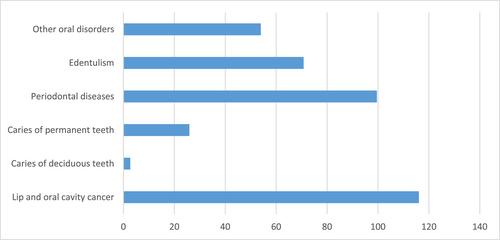Assessing the status of oral health integration in South East Asian Regional Office countries' Universal Health Coverage–A scoping review
Abstract
Background
Oral diseases affect close to 3.5 billion people worldwide and there has been a call by the World Health Organization (WHO) to integrate oral health into the Universal Health Coverage (UHC) agenda.
Objectives
To collate and synthesise information regarding the status of integration of oral health into the health systems covered by UHC across the 11 countries in the South East Asian Regional Office.
Methods
Drawing on the framework of the six building blocks of health systems as devised by WHO, we compared the public dental care coverage models, with a focus on outpatient dental care in these countries. We gathered this information from publicly available resources, databases and peer-reviewed publications to populate the template guided by the WHO Health System Building Blocks.
Results
We found a poor access to oral health care, lopsided distribution of manpower, rickety health information systems, and private sector domination and inadequate or absent financing mechanisms for outpatient procedures. The private sector was dominant in all countries except Thailand and Srilanka. Financing was absent in most countries and deficient in Thailand and Indonesia. Dental workforce was deficient in most countries except India, Srilanka, and Thailand. Health information systems were weak with no dental items under price control. Better UHC indicators did not guarantee a lower oral disease burden.
Conclusions
Our review highlighted the close connection between service quality and human resources, governance, and finance. There is a need to establish standardised dental treatment guidelines that are uniformly adopted across countries, integrate oral health into national health and development programs, push for functional oral health research through collecting robust surveillance, economic, and social impact data and the development of cost-effective strategies tailored to each country's unique needs.


 求助内容:
求助内容: 应助结果提醒方式:
应助结果提醒方式:


